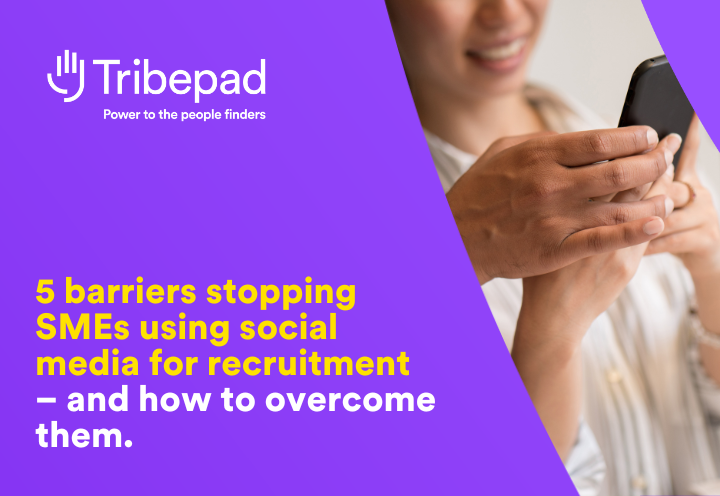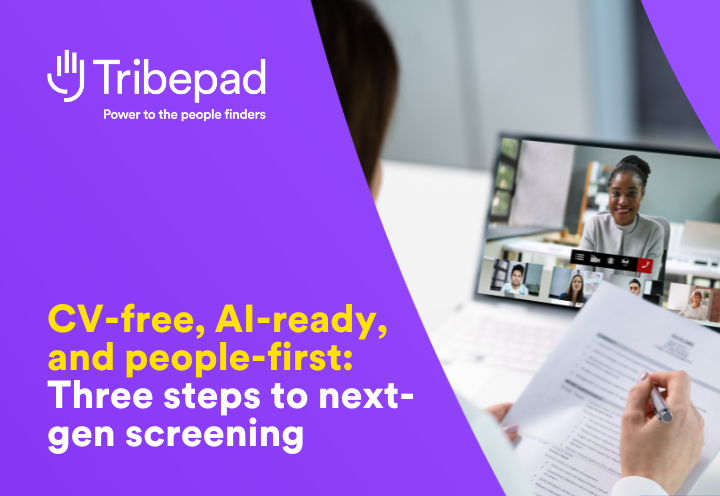How to improve quality of hire: 31 practical ideas
Improving quality of hire is a major priority for most recruiters. If not the major priority.
As LinkedIn say, “the future of recruiting will revolve around strategic metrics: those that measure the business outcomes of your team’s efforts – not just the actions they take.”
Hire quality is one of those essential strategic metrics, empowering your team to drive real business value. And, critically, prove that value in terms leaders unequivocally understand.
Improving time-to-hire matters for recruiters, for example. But CEOs typically care most about the bottom-line: what’s recruitment’s ROI? When you improve quality of hire, you’re hiring better people who add value for longer, ultimately increasing productivity for less money. That’s a language leaders speak.
Improving quality of hire means taking ownership over recruitment’s impact and proving strategic value to the business. Let’s talk about 31 practical ways to do that improve recruitment and achieve hiring excellence.
Define ‘quality’
You’ll struggle to improve quality of hire unless you understand what high quality candidates look like.
1. Decide what you’ll measure
You can’t manage what you don’t measure. Decide what metrics you’ll use to measure quality of hire, so you can understand how you’re doing and track progress.
Usually you’ll use some combination of employee retention, employee engagement and performance ratings, LinkedIn say. Establishing clear measurement criteria is crucial for recruiting success.
2. Reverse-engineer from your best employees
Do you understand what quality candidates look like? Map backwards from your best employees. Who’s thriving? Who’s a great addition to your culture? Who’s being promoted? Who’s happiest?
It’ll be difficult to form any quantitative conclusions but subjective impressions matter. If possible, interview your great performers. Brainstorm with recruiters, to better understand quality markers for your biz.
3. Create business-wide accountability
Quality of hire isn’t only recruiters’ responsibility. Look at the metrics involved in calculating hire quality – retention, engagement and performance. They’re everyone’s responsibility: HR, L&D, D&I, managers, executives.
If your business is serious about improving quality of hire, it can’t just be a recruitment initiative. Recruitment can lead the charge but a cross-functional team with bigger-picture vision is best placed to drive change and hire quality candidates.
4. Work closer with hiring managers
61% of hiring managers say recruiters have only a low to moderate understanding of the jobs they recruit for. Not ideal.
Better collaboration is vital. You’ll struggle to improve quality of hire if you don’t know what quality candidates actually look like, and the best people to communicate that are your hiring managers.
Normalise deeper hiring manager involvement upfront, to nail the internal job description and recruiters’ understanding before resourcing starts.
Attract better quality applications
Improving quality of hire starts with attracting quality candidates.
5. Craft compelling job adverts
A whole decade ago (phew), Lou Adler wrote about how “most job postings are written to weed out weaker candidates, not attract stronger ones.” He noted how the underlying assumption – that there’s a huge talent pool of top candidates needing trimming down – was totally wrong.
The same’s true today. Even when you’re battling huge application volumes, most markets are still candidate-driven.
Learning how to attract quality candidates, not repel low quality ones, is essential. Instead of publishing bland internal job descriptions designed to weed out unqualified applicants, write job adverts designed to attract the best. (Brush up your copywriting skills with this practical toolkit.)
6. Emphasise your culture
The metrics that typically contribute to quality of hire calculations (retention, engagement, performance) depend on new hires’ being a great addition to your culture.
Browse any job board now though and most roles copy-and-paste skills with no discussion of culture. Agency recruiters typically avoid talking about specifics for fear of other recruiters stealing their clients or roles – so there’s space for in-house recruitment teams to steal the show here.
Use job adverts to showcase your culture, to improve quality of hire by attracting better candidates from the get-go.
7. Adopt skills-based hiring
Again, it’s that perspective-switch Lou Adler talks about. Don’t try and rule out unqualified applicants; try and attract the best. And the best might not have exactly five years’ experience, or a precise degree, or whatever it is.
Think carefully about the performance outcomes you need; don’t dictate qualifications unless they’re genuinely a deal-breaker.
Skills-based hiring has become an increasing priority over the past few years, as recruiters battle ongoing talent shortages and seek to improve both quantity and quality of candidates. Could you use candidate assessments instead of specifying education level, for instance?
8. Use unbiased language
The average job advert has 6 male-coded or female-coded words, Total Jobs say. And Adzuna found 60% of businesses show significant male bias in their job adverts.
That’s a major problem. If you artificially narrow your talent pool, you risk missing great people. Invest time upfront in optimising your job adverts so they’re unbiased.
Tribepad’s inbuilt Ad Assistant helps you take care of biased language with a couple of clicks, running real-time checks on your job adverts as you input them to maximise readability, engagement, and inclusivity.
Learn more about how Tribepad supports inclusive recruitment.
Optimise sourcing channels
To improve the quality of candidates coming into your recruitment process, you need to widen and optimise your sourcing mix. Great people don’t only hang out on Indeed.
9. Build a referral program
If you’re wondering how to source quality candidates for a job, referrals might just be your answer. 88% of businesses believe referrals are the best source for high quality candidates. Referral hires also typically stay longer, work harder and reduce time-to-hire.
If you don’t already have a robust employee referral program, building one (or optimising the one you’ve got) is the fastest way to improve quality of hire.
10. Embrace outside-the-box channels
Your recruitment team probably uses Twitter. But think further outside the box – Tumblr? TikTok? Twitch? Tribe? There are some 75 popular social media channels – doing something new could help you reach quality candidates in more compelling ways.
And that’s the recipe for getting better people into your recruitment process. And hopefully into the business.
11. Advertise across more boards
To improve quality of hire, you need to deepen your talent pool and extend your reach. If you’re not attracting top applicants, you’ll struggle how to hire quality employees.
Posting to multiple boards shouldn’t increase your workload though. Look for recruitment tech that lets you post roles to multiple boards with a click. Ideally with a pay-as-you-go option for niche boards, so you don’t have to manage heaps of expensive annual contracts.
12. Headhunt passive talent
Often the best candidates aren’t active jobseekers. Copy agency recruiters by starting conversations with top people in your space. You never know who’ll be open to a discussion unless you ask.
Plus, even if they’re not looking right now, you’re then on their radar. Which brings us to #13.
13. Build talent communities
The biggest quality of hire gains come when your recruitment function moves away from reactive resourcing and towards proactive relationship building.
Start conversations, turn conversations into relationships, then over time your pipeline of high quality candidates will grow.
Tribepad makes proactive recruitment super simple, with talent pooling, recruitment marketing, and CRM functionality.
14. Level-up PPC investment for key roles
PPC adverts can be a powerful tactic to extend your reach, especially for roles you’re struggling to fill.
Consider a strategy that also targets outside-the-box terms that passive but dissatisfied candidates might search, to reach top-quality hires nobody’s talking to yet. Like ‘overlooked for promotion’, for example, or ‘problems with my boss’.
Unusual avenues can unearth high quality candidates that’re on nobody’s radar.
15. Emphasise internal mobility
There’s no better candidate than an existing thriving employee. But recruitment typically prioritises external talent without doing enough to promote internal movement.
Get into the habit of looking internally first, every time. This should be a no-brainer, given 82% of employees would leave their jobs because of poor career progression.
The lower your turnover rate, the better for quality-of-hire. It’s a double whammy.
16. Optimise your channel strategy
It sounds obvious, but recruiters should be spending the most time and money on the sourcing channels that work best. And although there are trends (like, referrals are usually great) every business is different.
Robust reporting capability is a must-have, to help unpick the quality-of-hire equation. You should be able to see at a glance where your quality candidates come from.
Tribepad Job Booster uses programmatic matching to review real-time performance data for job boards, recommending the right boards for the best ROI. It’s a most cost-effective, data-driven way to post job adverts.
Redesign your application process
Attracting quality candidates is one thing. But you also need them to complete your application and come through the process with a smile.
17. Prioritise the candidate experience
Mid-process dropouts are often your best applicants. Because quality candidates don’t put up with frustrating processes, and they don’t hang around long. A temp-cover receptionist won’t trawl through three rounds of interviews, for example.
Tailor your application journey to each role and make the process easy and appropriate for the role.
78% of job candidates say the overall candidate experience they get is an indicator of how a company values its people. The best candidates expect better.
Improve quality of hire by prioritising candidate experience. And use automation to accelerate time-to-hire.
18. Add robust pre-screening
Incorporate pre-screening into your application journey to prioritise candidates who’re the best aptitude fit. Especially if you’re handling extreme application volumes and need to sift through the pile, fast.
Accelerating time-to-hire for everyone is harder than accelerating time-to-hire for your likely-to-be-best people. Root them out early then give them the red carpet treatment.
19. Use video interviews early
Video interviews give a better impression of cultural and organisational fit than telephone screening, without the time investment of face-to-face or live interviews.
It’s the same principle as pre-screening: use tools to identify your best applicants faster, so you can fast-track them through your recruitment process. To accelerate high quality candidates into the business.
20. Level-up your interview technique
Are your recruiters consistently spotting the best quality candidates, or do good people slip through the net? Are some recruiters better than others?
Recruiters are quality gatekeepers: to improve quality of hire, improve recruiters’ ability to assess quality of hire.
Review interview questions to check they’re genuinely fit-for-purpose and track your recruitment team KPIs religiously. Now’s a great time to schedule interview training, if it’s needed.
21. Anonymise applications
If you narrow your talent pool you risk missing great people. Using recruitment technology to anonymise applications helps eradicate unconscious bias – so you don’t rule people out who’d have been great. To hire quality employees, you need to know you’re not wrongly overlooking people.
22. Improve collaboration
How much collaboration happens on your team? How many people review each candidate? Do hiring managers help or hinder the process?
Build mechanisms to gather diverse perspectives on employees, to improve your decision-making around quality-of-hire. Good recruitment software makes collaboration easy, with on-the-go dashboards and at-a-glance progress reports for hiring managers.
Elevate your employer brand
One of the most powerful ways how to improve quality of hire is through better employer branding. Strong brands attract strong candidates.
23. Encourage employee-generated content
Nothing shows off your culture better than the people who embody it. Empower employees to become brand ambassadors. Encourage them to share life-at-work content; give them company-wide hashtags; protect them with clear guidelines; reward them with interaction.
The better you bring your brand to life, the better people (for you) you’ll attract.
24. Maintain an active social presence
Your social media shouldn’t just feature regular business content, but regular recruitment content. If there’s budget, a dedicated recruitment social media manager could be a godsend.
The point is, be visible. 90% of candidates would apply for a job from an employer brand that’s actively maintained, so this stuff is a no-brainer. Radiate your truth outwards, and you’ll draw better-fit people inwards.
25. Ensure brand consistency
If you’re ‘talking’, people should know it’s you. Invest in messaging and tone-of-voice guidelines if you haven’t got them, and make sure every recruiter is confident representing your organisation.
And it goes without saying, your visual game needs to be on-point. Applicants, candidates then new hires should have a consistent, on-brand experience from first touchpoint to last.
26. Don’t make basic mistakes
A-list hires don’t apply to B-list employers. And the fastest way to relegate yourself into the B-list is making shoddy mistakes, like not giving fast feedback (or sending auto-rejection emails sent the second someone applies – they also suck) or not personalising emails.
If you’re not using recruitment software to take the guesswork out of this stuff, you should be.
27. Build a great careers site
Not having any dedicated careers content is so last decade. Create a hub for your business. Ideally with regularly updated blogs and curated employee social media feeds too, so your site always feels relevant (and you build your SEO collateral: win, win).
Lots of our Tribepad Gro customers don’t have much in the way of a dedicated careers site. So we built a dedicated drag-and-drop careers site builder, complete with an accessible best-practice careers site template to work from.
Add as many pages as you want, specify SEO requirements, add descriptions, drag-and-drop heaps of different components. All with your own branding. All connected automatically to your ATS and jobs, without any work your side.
Set new hires up for success
There’s nothing worse than attracting, engaging, and hiring high quality candidates, only for them to leave within weeks of starting.
28. Deliver seamless onboarding
Great onboarding matters. However amazing a candidate, if they have an awful onboarding experience, they’ll never turn into a quality hire. Use technology to embed consistency, avoid mistakes and slash your admin burden.
And if nobody’s taking ownership of onboarding, recruitment should step up. To help quality candidates become quality employees who add buckets of value long-term.
Tribepad Onboarding is one of the most popular parts of Tribepad’s talent platform. We consistently hear from both Pro and Gro customers that they love our easy-to-use, slick and seamless onboarding tech. And so do their candidates.
29. Check-in with new hires regularly
Your best candidates probably felt like you’re their new best friend throughout the recruitment process. It’s jarring and deflating if they sign their contract and you suddenly disappear.
Build check-ins with new hires into your processes, so it’s not forgotten. It might feel like a small thing but candidates who feel deflated are less likely to become engaged, productive, loyal employees. That is, quality employees.
30. Build a strategic contractor community
Use of contractors, temps, locums and freelancers has exploded in almost every industry. When you harness those workers effectively, they can ease the pressure on existing employees (for example, providing holiday cover), to help prevent burnout, boost engagement and keep turnover low.
It’s an indirect route to improving quality of hire, but it could be an important one.
31. Champion flexible benefits
You mightn’t be directly responsible for benefits, but recruiters are uniquely placed to help HR stay in-touch with candidate needs and expectations.
Contribute to a culture of retention that delivers better quality of hire by proactively acting as a conduit between candidates’ needs and HR’s decisions. For instance, make space to summarise candidates’ top requested benefits monthly and pass those insights along.
The best recruitment teams aren’t just delivery managers. They’re strategic partners who help the organisation understand how its stance on talent needs to evolve, to build the right workforce for the future. Stuff like this is how you step proactively into that role.
… And there you have it: 31 ways to improve quality of hire.
Great recruiters are business advisors, not order-takers. To build a recruitment function that genuinely furthers business outcomes – and prove your value upwards to leaders – improving quality of hire is a must.
Tribepad is the trusted tech ally to smart(er) recruiters everywhere. Combining ATS, CRM, Video Interviewing, and Onboarding, our talent acquisition software is a springboard for fairer, faster, better recruitment for everyone.
Trusted by organisations like Tesco, NHS Professionals, and Subway, 25-million people in 16 languages use Tribepad.
Book a 30-minute demo now to see how to improve quality of hire with Tribepad, and all your other important recruitment metrics too.




